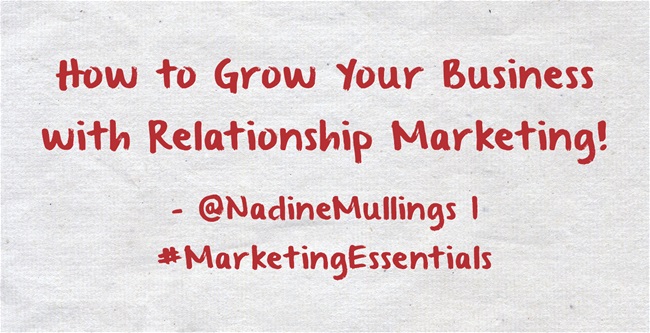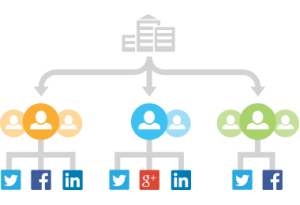 Dictionary.com defines a relationship as a connection, association, or involvement. It also defines marketing as the total of activities involved in the transfer of goods from the producer or seller to the consumer or buyer.
Dictionary.com defines a relationship as a connection, association, or involvement. It also defines marketing as the total of activities involved in the transfer of goods from the producer or seller to the consumer or buyer.
My definition of Relationship Marketing is the activities involved in building a greater connection with your clients, prospects and partners. This strong connection often leads to the sale of products or services, and also increases loyalty to your brand or company.
With that said, Relationship Marketing is a key part of your overall marketing strategy, and should occur both online and offline.
In this blog post I will mention a few activities that you should include in your Relationship Marketing:
ONLINE
In order to build a connection online with your clients, prospects, and partners, it is important to have an online presence. Included in your online presence should be the following activities:
- A Company Blog– In addition to having a company website, a company blog can help to build the relationship that you have with your audience, because a blog allows you to show your expertise, knowledge and personality in ways that a website alone does not accomplish. The key to a successful business blog is:
- It should be updated frequently
- It should contain valuable content relevant to your audience
- It should showcase the personality of your brand
- A Social Media Presence– It’s not necessary to be on all the popular social networks out there, but it is beneficially for your company to be on social networks that have a high percentage of your target market, and networks that will showcase your business well. Social Networks are a great way to strength your connection with your clients, prospects, and partners because it allows you to create a conversation around your company, industry, products, services, values, beliefs, etc. The key to a successful social media presence is:
- Know your audience
- Post content that is interesting to your audience
- Create conversations
- An E-Newsletter or EZine– An email publication that your company produces is a great way to strengthen the connection that you have with customers, prospects and partners. It is a great way for your audience to get to know you and get to know what your company stands for. The key to a successful E-Newletter is:
- Know your audience
- Give valuable information in each ezine
- Provide 80% valuable content and only 20% company promotions
OFFLINE
- Events– Plan events to show appreciation for your customers and partners. Taking the time to host these events can build a strong connection with you and your customers and partners. It also helps to solidify their loyalty to your company. You can also have events to introduce your prospects to your business or your brand. Grand Openings, Launch Parties, etc. are all great ways for people to get to know more about you, your company, and your brand.
- One-on-One Meetings– When possible, schedule one-on-one meetings with your clients, prospects and partners. This is a great way to build a strong connection, and for people to get to know, like and trust you.
- Send Cards– It is important to send your customers, prospects and partners cards on various occasions. This could include birthdays, anniversary, Thank You for Your Business, Thank You for Your Time, Happy Holiday cards and more. Taking the time out to send your customers, prospects and partners cards really helps to create loyalty and build trust.
These are just a few ways you can use Relationship Marketing to GROW your business. What other ways can you think of in which you can use Relationship Marketing to grow your business?





 Over the last eight years or so, Social Media has become very popular for personal use and business use. Businesses are learning how to use various social networks to reach out to current customers and get new prospects just by having an active presence on social media. Some businesses are doing this very successfully, and other businesses not so much!
Over the last eight years or so, Social Media has become very popular for personal use and business use. Businesses are learning how to use various social networks to reach out to current customers and get new prospects just by having an active presence on social media. Some businesses are doing this very successfully, and other businesses not so much!